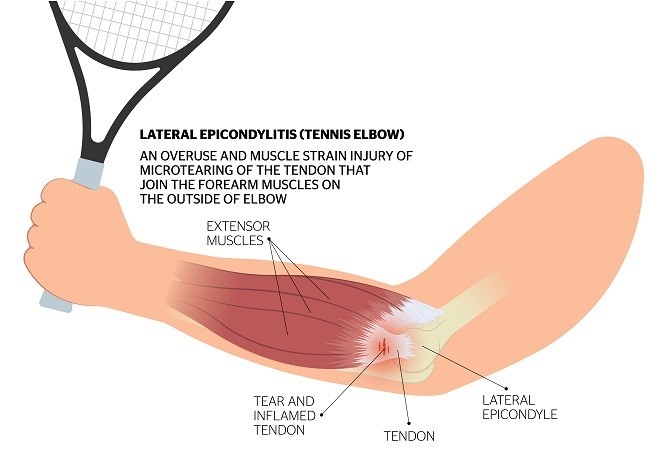Tendonitis is an inflammation or irritation of a tendon —
the thick, fibrous cords that connect the muscle to the bone that helps your
muscles move your bones. Tendinitis can occur in any of the tendons in your
body, but the areas most prone to tendinitis are the shoulders, elbows, and
knees.
اضافة اعلان
What causes tendinitis?
Tendinitis can occur due to a sudden injury, but it often
stems from performing specific movements repeatedly for long periods. The primary
reported cause of these injuries is occupations or hobbies that require
repetitive movements, where pressure is placed on the tendons to perform these
tasks.
Symptoms
Symptoms of tendinitis appear at the point where the tendon
attaches to the bone. The pain from tendinitis is typically a dull ache
concentrated around the affected area or joint. The area will be tender, and
you’ll feel increased pain if someone touches it or if you move the injured
area.
Symptoms also include the feeling of a tightness that makes
it difficult to move the area and swelling.
Who gets tendinitis?
While anyone can get tendinitis, it is more common in
adults, especially those over 40. As tendons age, they tolerate less stress,
are less elastic. and are easier to tear.
Common names and areas for tendinitis
injuries
Lateral epicondylitis (tennis elbow)
Lateral epicondylitis (tennis elbow) is a painful condition
that occurs when tendons in your elbow are overloaded, usually by repetitive
motions of the wrist and arm.
Despite its name, athletes aren't the only people who
develop
tennis elbow. For example, plumbers, painters, carpenters, and
butchers, or people whose jobs feature specific types of motions can get tennis
elbow.

The pain from tennis elbow occurs primarily where the
tendons of your forearm muscles attach to a bony bump on the outside of your
elbow. Pain can also spread into your forearm and wrist.
Medial epicondylitis (golfer's elbow)
Golfer's elbow is a condition that causes pain where the
tendons of your forearm muscles attach to the bony bump on the inside of your elbow.
The pain can also spread into your forearm and wrist.
Golfer's elbow is similar to tennis elbow and is not limited
to golfers. Tennis players and others who repeatedly use their wrists or clench
their fingers can also develop golfer's elbow.
Rotator cuff tendinitis
Rotator cuff tendinitis is also called impingement, bursitis,
or biceps tendinitis. This type of tendinitis is identified by pain and
swelling of the cuff tendons and the surrounding bursa (The bursa is a soft
sack that contains a small amount of fluid and cushions the joint).
Patellar tendinitis (jumper’s knee)
Patellar tendinitis is an injury to the tendon connecting
your kneecap (patella) to your shinbone. The patellar tendon works with the
muscles at the front of your thigh to extend your knee so that you can kick,
run, and jump.
Patellar tendinitis, also known as jumper's knee, is most
common in athletes whose sports involve frequent jumping — such as
basketball and
volleyball. However, even people who don't participate in jumping sports
can get patellar tendinitis.
How is tendinitis diagnosed?
At your appointment, your doctor will ask about your medical history and perform a
physical exam of the affected area.
If your doctor can’t make a diagnosis with a physical exam,
they may order MRI scans.
Treatment
Most cases of tendinitis can be successfully treated with
physiotherapy, which includes therapeutic modalities, manual therapy, and therapeutic
exercise.
Prevention
These simple steps can be used to lower your chances of
developing tendinitis:
Keeping physically fit and building your muscles, warming up
before exercising, avoiding overuse and repetitive motions, cross-training if
you’re an athlete, using proper posture when working at a desk or doing other
tasks, not staying in the same position for too long and moving around
periodically, and using proper equipment at work and during athletic
activities.
Read more Health



